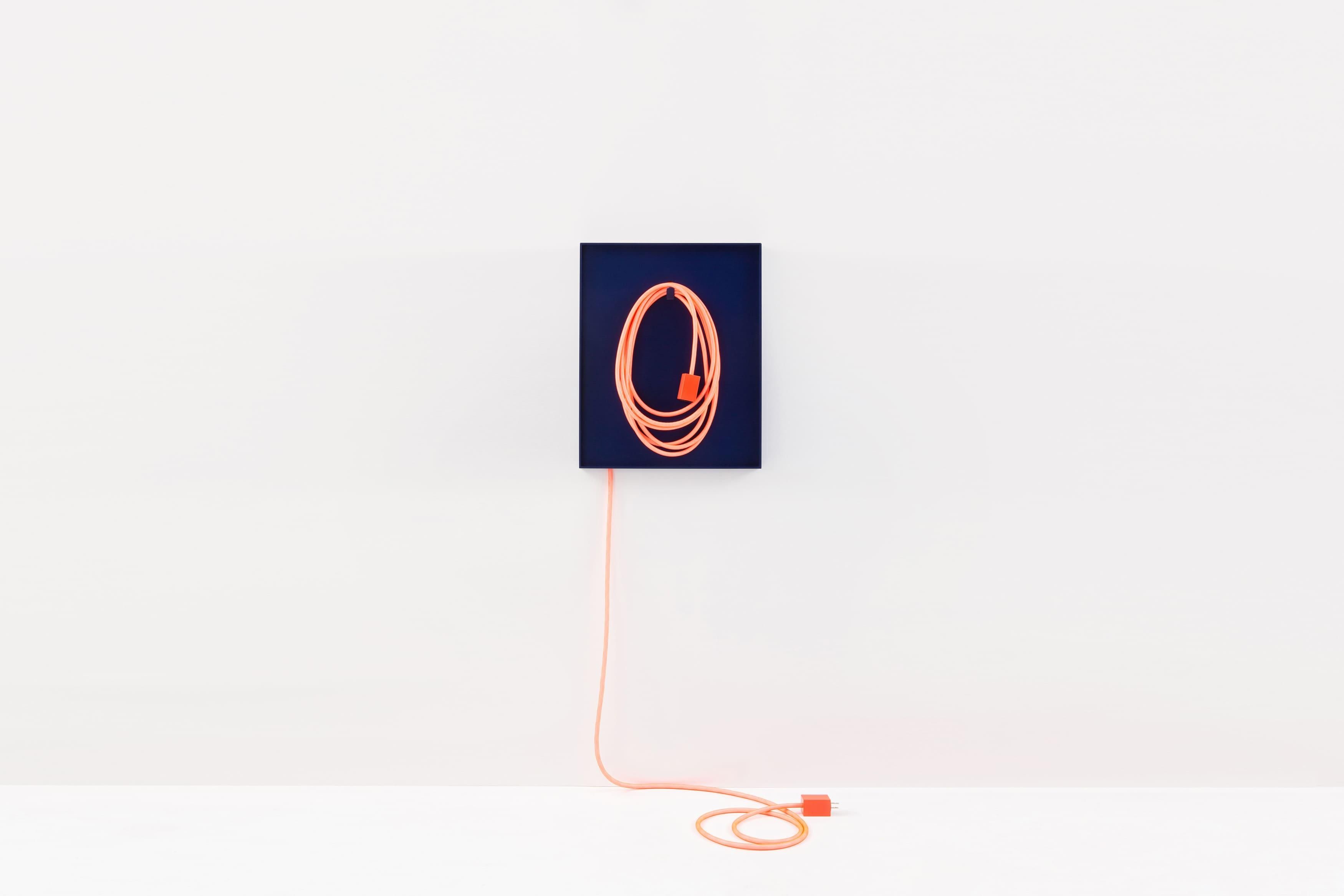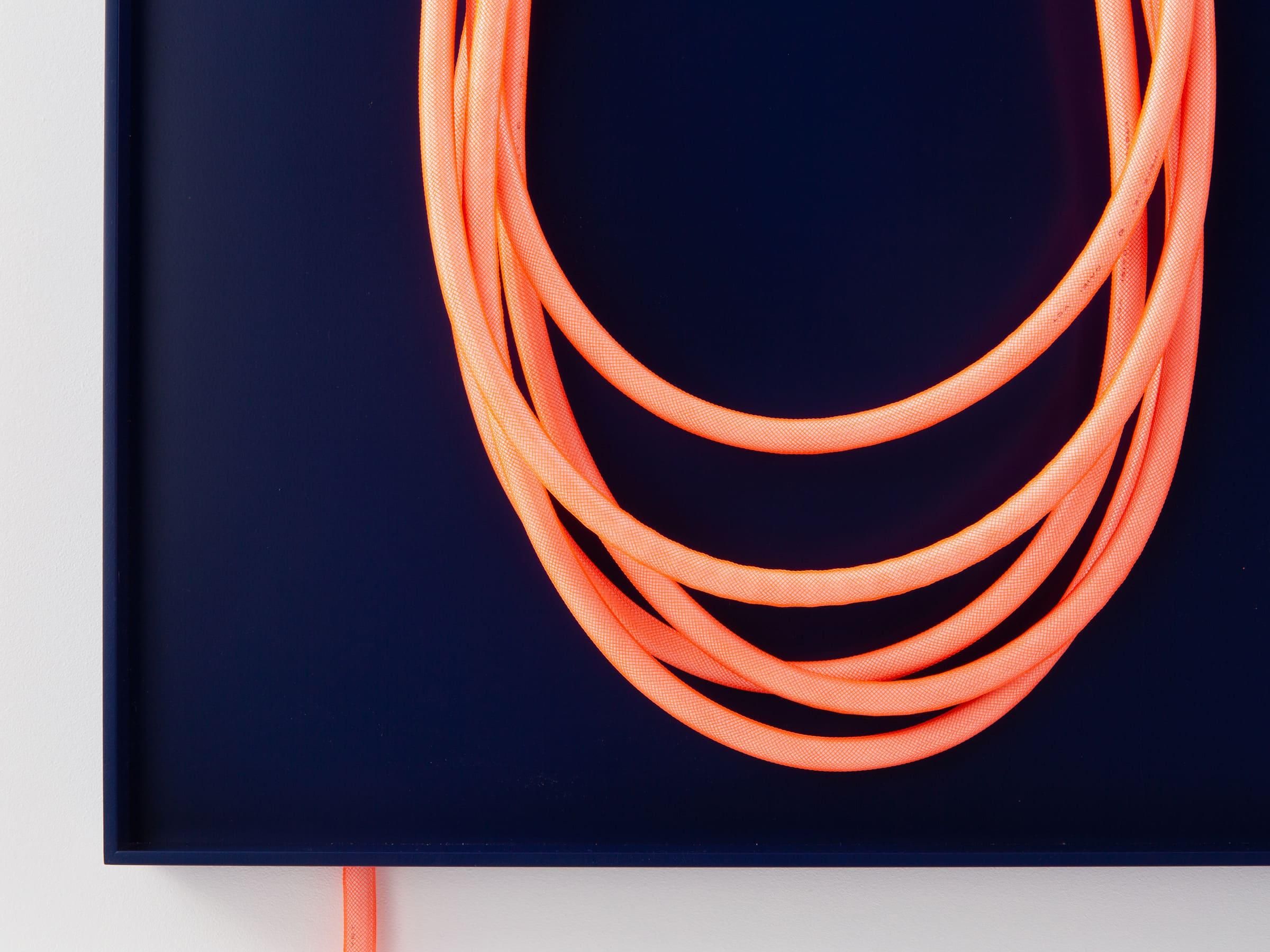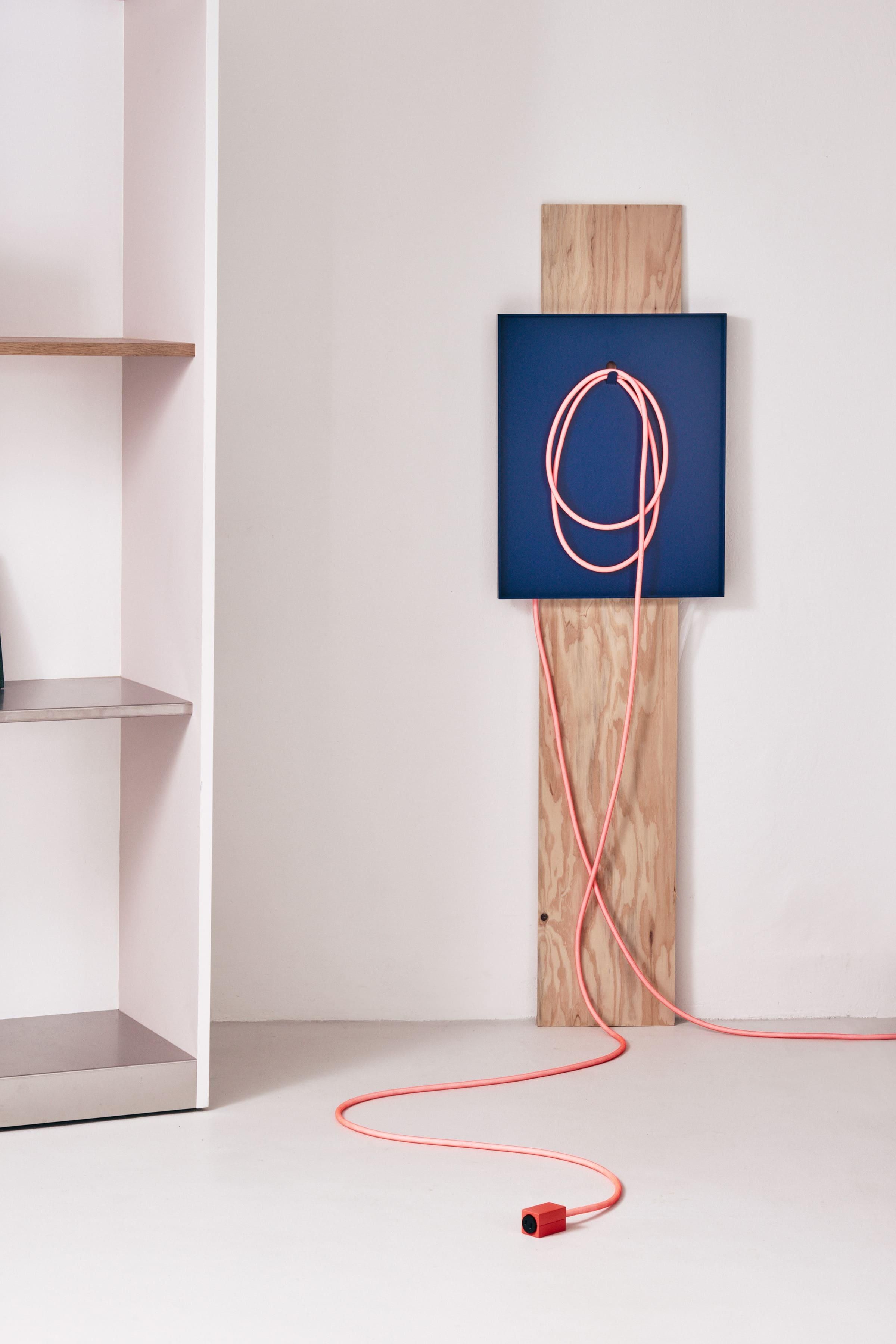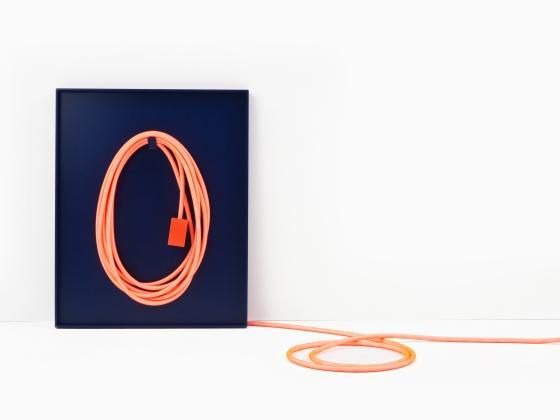Daisuke Motogi - INTERVIEW Vol.2
Vol.1はこちらからご覧いただけます。
2022年に行われた、Artekの名作スツール「Stool 60」を改変するアイデアを集めたプロジェクト『Hackability of the Stool』は、どのような経緯で始まり、国内外で巡回展を行う流れになったのでしょうか。
このプロジェクトは、あるコワーキングスペースのインテリアがきっかけとなり始まりました。
スタートアップと周辺のコミュニティのためのそのスペースは、日々状況が変わるため、常にマイナーチェンジやアップデートを繰り返していました。
ある日、カンファレンスのためのスツールを150脚ほど用意することになったのですが、そこはイベントだけに使われるわけではなく、ある日はワークショップ、ある日はイベント、またある日はレクチャーなど、様々な使われ方をしていたので、今後も含めて色々な用途に対応できるスツールが望ましいと考えました。
そこで、運営メンバーや実際に使う人たちと「どんな場面でどんな機能が必要になるか」を洗い出していくワークショップを実施しました。
そのワークショップでは、実に様々な要望や機能についてのアイデアが出ました。
それらをひとつのかたちに集約してしまうと、十徳ナイフのように過剰に多機能なスツールになってしまうし、そもそもスツールはすでに名作がたくさんつくられてきたので、これ以上新たにデザインする必要はあるのだろうかという疑問もありました。
それなら、既製品を転用するアプローチのほうが効率もよいのではないか。そんなふうに考えていくうちに、「既存のスツールに必要な機能のパーツを追加する」というアイデアを思いつきました。

Photo : Kenta Hasegawa
母体としてアルヴァ・アアルトの「Stool 60」を選び、日々機能が変わる空間のためにまず10のアイデアをつくったのですが、さらなる可能性を感じたのでクライアントワークから自主的なリサーチに切り替えて継続し、300以上のスケッチを描き、その中から100のアイデアを実際に制作するに至りました。
その後、フィジカルな展覧会の開催が計画されていましたが、新型コロナ感染拡大によって開催の見通しが立たなくなってしまったため、インスタグラム(#hackabilityofthestool)でオンラインエキシビジョンとして発表しました。
その最初のポストに#Artekをつけたことがきっかけで、アアルトのオリジナルスツールを制作しているArtekに活動が知られることとなりました。
僕たちの勝手なプロジェクトに最初は困惑したようでしたが(笑)、2022年にはArtekのサポートのもと京都市京セラ美術館での展覧会が実現しました。
その後、2023年にはミラノ、バーゼル、ロンドンでの巡回展もサポートしていただくなど、良好な関係を築いています。
また、中国でも2021年、2024年の2度展示しました。
『Hackability of the Stool』や『Bench Bomb』にもあるように、アートや音楽などから生まれた元木さん独自の表現方法が見受けられますが、アートや音楽などで、具体的にどのようなものから影響を受けましたか。
影響を受けた人物や事柄などを教えてください。
ジョン・ケージ「4分33秒」
演奏者は演奏をしないという誰にでも再現可能かつ発明的な手法によって、音楽の余白自体に意味があり、咳き込む声やちょっとした会場の物音のようなノイズが音楽になりうる可能性を示したこの曲には、余白の発見という意味でとても影響を受けました。
JAY-Z「Izzo (H.O.V.A.)」
カニエ・ウエスト(Ye)がトラックを制作したこの曲は、The Jackson 5の「I Want You Back」という誰もが知っている大名曲がサンプリングされています。
それまでのサンプリングには、「誰もが知っている曲のループ」というシンプルなアプローチや、「誰も知らない曲や場所のループ」つまりレアな曲の発掘や、レアな使い方、などのアプローチがありましたが、この曲は、「誰もが知っている素材の、誰も気づかなかった使い方」で作られていて、その考え方にとても影響を受けています。
2022年にE&Yから発表した「STOP MAKING SENSE」は、見方を変え、別の視点から捉え直す「リフレーミング」という手法を用い、日常への新たな見立ての提案をしている作品です。
その対象として、延長コードを用いた、「STOP MAKING SENSE」のコンセプトや完成までの経緯について、あらためてご説明いただけますでしょうか。
事務所にある大きなフレームに、傘や箒といったなんでもないものを飾るという遊びをしていたのがきっかけです。
建築やインテリアデザインのプロジェクトでは、配線や配管を隠す処理をすることがよくあります。
そうすることでスッキリとしたデザインにはなりますが、最初に決めた位置から移動することが難しく、ものの位置が限定的になってしまったり、余白のないデザインとなってしまうことに共感できない部分がありました。むしろ、少し掃除は大変だけど、配線が剥き出しになっていたり、延長コードが床に転がっているさまは、ライブハウスみたいでかっこいいとさえ思っていました。そこで、ある時から壁の中の配線を、仕上げをガラスにして見せたり、露出しているさまがよく見えるデザインを試みるようになりました。


ある日、事務所の延長コードをフレームに飾ってみたところ、ドローイングのように見えて面白かったので、毎日形状を変えながら延長コードによるドローイングをつくっていました。
その遊びの細部をきちんと詰めてデザインしたのが「STOP MAKING SENSE」です。
視点だけを変えることで、壁のシミが模様になったり、ジョン・ケージの「4分33秒」のように演奏の概念を反転させることでノイズが鑑賞の対象になったりと、みんなが知っているものにできるだけ簡単な方法で新しい意味を与えることに興味があります。
ちなみに「STOP MAKING SENSE」のタイトルは、アメリカのロックバンド、トーキング・ヘッズから拝借しています。

視点を転換するということは、固定概念をなくし、新しいことが生まれるきっかけになります。
見方を変えるという点で、普段、意識していることはありますか。
たとえば、木や火、人など、シンプルで当たり前に知っていると思い込んでいるものごとを改めて調べ直すと、自分がきちんと理解していなかったことを目の当たりにします。
事実、世界はとんでもなく複雑で、わかっていたつもりのものが、本質的には全く理解できていないということが往々にしてあります。
森羅万象すべてはグラデーション状につながっていて、コップ一つとってもある時は「ものを飲む道具」であり「花瓶」であり「ペン立て」であることもあって、考えれば考えるほどコップとは何か理解していないことがわかります。
つまり、視点を転換するというよりは、自分が世の中を全然理解していないという前提でものごとを見ることでしょうか。
調べれば調べるほど世の中が複雑であることが分かってくる。そんな世界の捉え方をしています。「STOP MAKING SENSE」ですね。
今一番興味のあることや取り組もうとしているプロジェクトなどがあれば、教えてください。
やったことのないプログラムのプロジェクトに興味があります。

Photo : Marc Goodwin, Archmospheres
Daisuke Motogi - INTERVIEW Vol.2
Vol. 1 can be found here.
How did the project Hackability of the Stool, a collection of ideas for modifying artek's famous Stool 60 in 2022, begin and how did it flow into a touring exhibition at home and abroad?
The project started with the interior of a co-working space.
Its space for start-ups and the surrounding community was constantly undergoing minor changes and updates as the situation changed on a daily basis.
One day, we had to prepare about 150 stools for a conference, but the place was not only used for events, it was used for workshops one day, events another day, lectures another day, etc., so we thought it would be desirable to have stools that could be used for many different purposes, including in the future We thought it would be desirable to have a stool that could be used for a variety of purposes, including in the future.
Therefore, a workshop was held with management members and actual users to identify ‘what functions are needed in what situations’.
The workshop generated a great variety of requests and ideas for features.
If all of these were to be concentrated into one form, it would become an excessively multifunctional stool, like the Juutoku knife, and as many masterpieces of stools have already been made, we wondered whether there was any need to design any more new ones.
If that is the case, wouldn't it be more efficient to take the approach of converting an existing product? As we thought about this, we came up with the idea of adding parts with the necessary functions to existing stools.

Photo : Kenta Hasegawa
I chose Alvar Aalto's “Stool 60” as a matrix and created the first 10 ideas for a space whose function changes daily, but as I saw more potential I switched from client work to independent research and continued, drawing more than 300 sketches, from which 100 ideas from which 100 ideas were actually produced.
A physical exhibition was subsequently planned, but as the prospects of holding it were no longer viable due to the spread of the new corona outbreak, it was announced as an online exhibition on Instagram (#hackabilityofthestool).
The first post with #Artek made the activity known to Artek, which produces Aalto's original stools.
Although they were initially baffled by our self-indulgent project, an exhibition at the Kyocera Museum of Art in Kyoto in 2022 was realised with the support of Artek.
The relationship has since developed well, with support for touring exhibitions in Milan, Basel and London in 2023.
It was also exhibited twice in China, in 2021 and 2024.
As in Hackability of the Stool and Bench Bomb, we can see your unique way of expression born from art and music, but what specific influences did you draw from in art and music?
What are some of the people or things that have influenced you?
4'33", John Cage
I was very influenced by this piece in terms of the discovery of the margins, as it showed that the margins of music themselves have meaning, and that noises such as coughs and slight noises in the hall can become music, through a method that is reproducible and inventive for anyone: the performer does not play.
"Izzo (H.O.V.A.)", JAY-Z
Kanye West (Ye) produced the track, which is sampled by The Jackson 5's “I Want You Back”, one of the biggest songs that everyone knows.
Until then, there had been two approaches to sampling: the simple approach of “loops of songs that everyone knows”, or “loops of songs and places that no one knows”, in other words, the discovery of rare songs and rare uses of material that no one had noticed, but this song was made with “material that everyone knows and uses that no one had noticed”. It's very much influenced by that idea.
"STOP MAKING SENSE", released from E&Y in 2022, is a work that proposes a new way of looking at everyday life, using the technique of “reframing” to change the way we look at things and see them from a different perspective.
Can you explain again the concept of STOP MAKING SENSE and how it was completed, using an extension cord as the subject?
It started as a playful way of decorating a large frame in the office with nothing, such as an umbrella or a broom.
In architectural and interior design projects, wiring and plumbing are often concealed.
Although this makes for a cleaner design, there was a part of me that did not sympathise with the fact that it is difficult to move things from their original position, and the positioning of things becomes limited and the design has no margins. In fact, I even thought it was cool to see exposed wires and extension cords lying on the floor, like a live music venue, even though it was a bit difficult to clean. So, at some point, I started experimenting with designs that showed the exposed wiring in the walls with a glass finish.


One day, I decorated a frame with extension cords from the office and it looked like a drawing, which was interesting, so I made drawings with extension cords, changing the shape every day.
STOP MAKING SENSE was designed with the details of this play properly in mind.
I am interested in giving new meaning to what we all know in the simplest possible way - by changing only the point of view, a stain on the wall becomes a pattern, or by inverting the concept of performance, as in John Cage's 4'33", noise becomes an object of appreciation.
Incidentally, the title of STOP MAKING SENSE is borrowed from the American rock band Talking Heads.

Shifting perspectives is an opportunity to eliminate stereotypes and create new ones.
In terms of changing the way you look at things, is there anything you are usually conscious of?
For example, when you re-examine things that you assume you know are simple and obvious, such as wood, fire and people, you see that you did not understand them properly.
The fact is that the world is ridiculously complex and often what we think we understand is essentially not understood at all.
Everything in the forest is connected in gradations, and even a single cup can at times be a “drinking utensil”, a “vase” or a “penholder”, and the more you think about it, the more you realise that you don't understand what a cup is.
In other words, rather than shifting your point of view, you are looking at things on the assumption that you don't understand the world at all.
The more you look into it, the more you realise how complex the world is. That's how I see the world. It's "STOP MAKING SENSE".
What are you most interested in at the moment and what projects are you trying to work on?
I am interested in a programme project that I have never done before.

Photo : Marc Goodwin, Archmospheres

